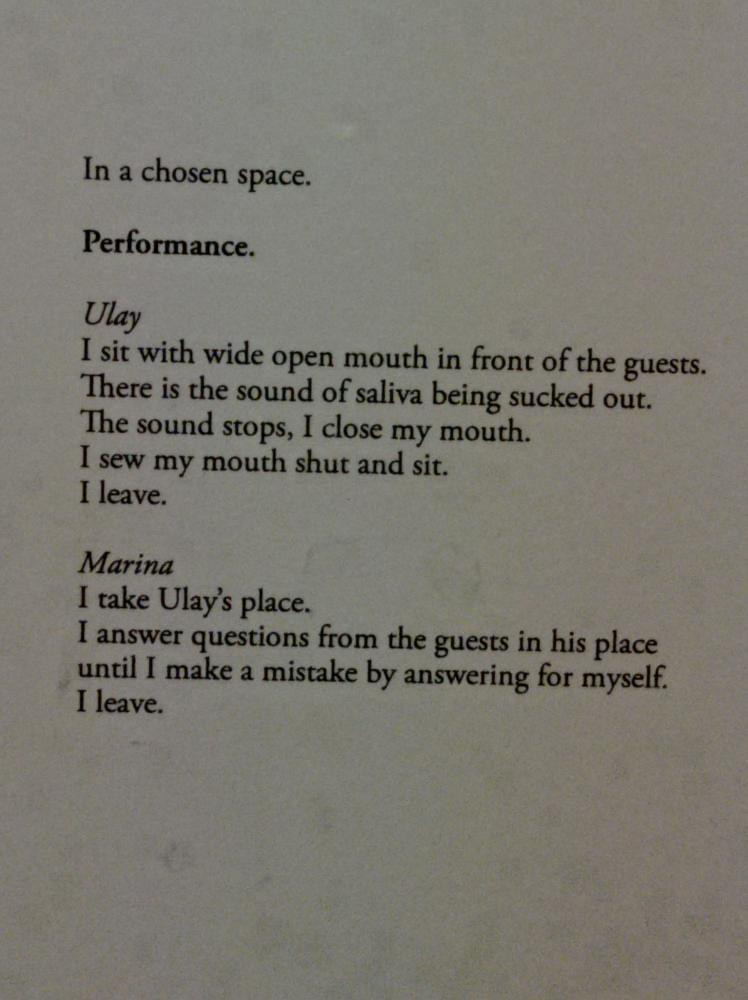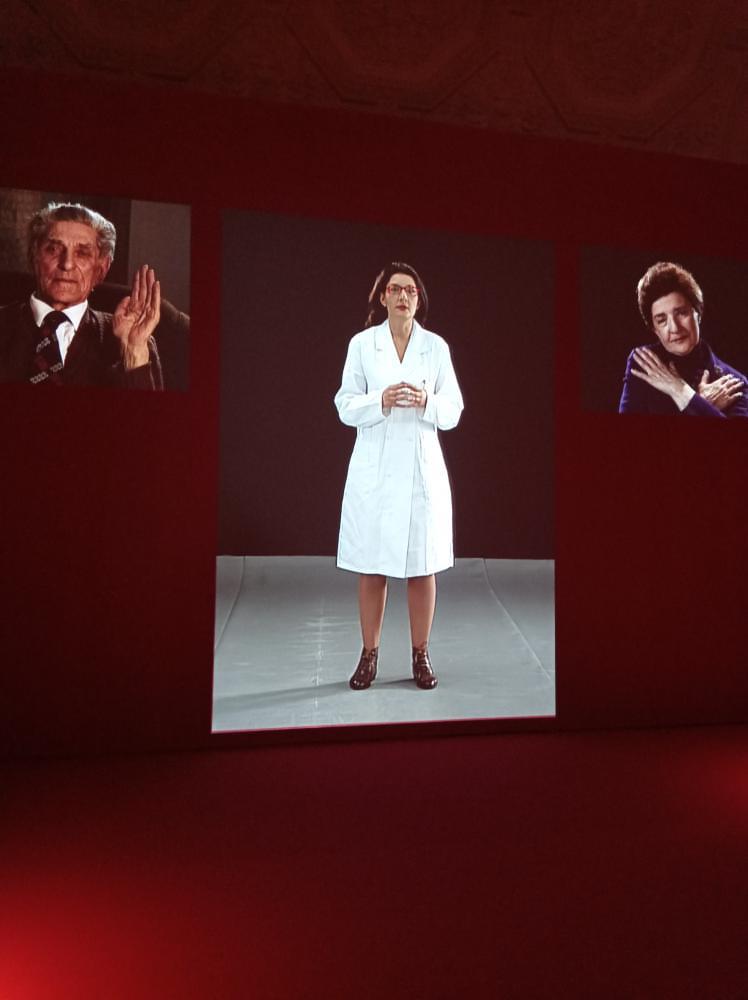Written by Anita Jergic
On the 28th of December, I attended the Marina Abramovic Exhibition at the Royal Academy of Arts in London. The RA is a privately funded institution that houses many interesting exhibitions, from impressionist paintings to performance artists. They offer a student discount of 50% which I encourage everyone to make use of.
Abramovic is a Serbian artist who focuses on the relationship between performer and audience. This specific exhibition was curated room by room, with each room exhibiting one performance. This layout made it more accessible and easier to follow due to this specific focus. One particularly thought-provoking room housed the items she used in her performance ‘Rhythm 0’. In this performance, she placed 72 objects on a table and allowed visitors to use them on her body. I think this performance aimed to see how people react to power. Some of the objects inspired kindness, such as wine, honey, and a hairbrush. Others, such as a kitchen knife or a loaded gun, showed how cruel people can be. Abramovic left the exhibition on a stretcher, with grey hairs and bleeding skin. A projection was used to show videos of the original 1974 performance. The performance has not been repeated, so it only exists now in its aftermath and objects. These objects serve, perhaps, as a reminder that the power to choose between kindness and cruelty is one we make daily.

My favourite room held the ‘Balkan Baroque’ collection. ‘Balkan Baroque’ is a mixture of spoken word, dance, photography, and objects. The range of the collections shows Abramovic’s passion for the topic. One of the photographs attached shows Abramovic narrating a gruesome story about killing a rat, an allegory that can be interpreted in many ways. Is it about trying to suppress evil? Or trying to protest the violence against the helpless? The beauty of Abramovic’s work is that the viewer must engage with the work, and each person will have a different but equally valid reaction to the work. This collection had a strong impact on me as I am Serbian, and the civil war in recent history, with hatred and protests against nationalism, still coexist. The photographs of Abramovic trying to clean the blood off cattle bones, an impossible task that highlights the futility of trying to forget the war and its impact, resonated strongly with me. As a pacifist, it is difficult to incorporate such a bloody war into my national identity, and Abramovic’s performance art showed me a new way of approaching this topic.

Abramovic also worked with her partner Ulay to explore the body- its abilities, limits, and relationships. One piece I found outstanding was ‘Rest Energy’, in which Abramovic holds a bow whilst Ulay holds an arrow and both lean back. If either let go or relaxed Abramovic would have had an arrow pierce her heart. Watching a recording of this piece, which lasted 4 minutes and 10 seconds, led me to contemplate power, trust, and love, and how they work together in a relationship.
Another piece in the same room, titled ‘Talking about Similarity’, had pictures of Ulay and Abramovic side by side. Ulay is sewing his mouth shut, whilst Abramovic is pictured speaking. The description tells guests that once Ulay had sewn his mouth shut Abramovic would replace him in his seat, and ‘answer questions from the guests in his place until [Abramovic] make[s] a mistake by answering for [her]self. [she] leave[s]’. I understood this piece to be highlighting the difference between presentation and representation, and representation and misunderstanding. However, I had a different experience from others. Whilst I approached this room visually, a friend I was with closed their eyes and focused on the auditory aspects of the exhibition: the overlapping voices, and the screaming alongside the quiet chanting. A whole cacophony that was curated in a way that can be understood as a work of art in itself. I find it very valuable that Abramovic’s art can be interpreted in so many ways, and that each way is unique to the person and the time.
In her more recent work, Abramovic incorporates her worldview and philosophy. The last two rooms focused on her understanding of energy lines and the body as a portal, and they were much more audience-oriented than the previous rooms. Whilst her other pieces of art were performance-based, involving the performer and a guest, these rooms were fully functioning with just the guest. One room had an arch with many white LED lights in crystal shapes pointing in and down. The guest could choose to walk through the portal, which represented spiritual and physical transitions, and the body as a portal. Although participation is encouraged, it is not mandatory. I saw people walk through the portal, whilst others pointedly walked around it, disagreeing with the idea. This is another way of engaging with Abramovic’s work: actively choosing to challenge her work does not diminish its value. It shows the importance of the debate she is portraying. She invites the guest to use her art as a stimulus for thought.
This was the first time I attended an exhibition focusing on a performance artist, and I enjoyed the experience. Although Abramovic herself was not there, the exhibition successfully presented her most famous works. Actors replicate certain performances, such as standing naked in the doorway to a room, whilst other performances were presented through photography and audio recordings. The range of materials Abramovic used shows her skill as an artist. Her pottery and prints are marvellous, but it is her performance art that establishes her as one of the most important artists of the 21st Century.
Written by Anita Jergic, Edited by Paige Tamasi, Photography by Anita Jergic and Ellie Linares, Published by Paige Tamasi.
